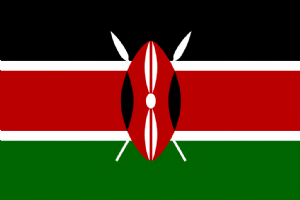Young Kenya has the future

In the aftermath of the Covid-19 pandemic, the Kenyan government faced a difficult task: it had to choose between the health and safety of citizens and sustain economic growth. Unfortunately these goals could not be achieved simultaneously in a country with 51 million people.
Finding a balance was a challenge. President Uhuru Kenyatta tried to strike the right balance in the pursuit of both. So far he has succeeded. The healthcare system is better prepared than ever to contain the spread of the virus, while major sectors of the economy are showing growth again. In addition to people's fears of becoming infected with the virus or spreading it unknowingly, many Kenyans quickly understood that a deterioration in the economic safety net is a threat to their wellbeing. When the government introduced the first round of movement restrictions in March to contain the spread of the virus, workers in the tourism and transportation sectors were suddenly out of jobs. Looking back, the conclusion is that it was imperative to close the borders and limit movement within the country to curb the first wave of the outbreak. The first round of restrictive policy measures gave the healthcare system time to prepare for further action. Mandatory curfews from sunset to sunrise, the closure of public areas and social distancing measures effectively avoided the worst case scenario of a major outbreak.
What certainly had an influence on the low number of infections is that the Kenyan population has an average age of 18 years old. According to the president, Kenya's youthful population is the country's largest resource, with the highest potential to improve the country's socio-economic profile.
Last week, the head of state spoke about the progress of Generation Unlimited (GenU). GenU is a United Nations youth empowerment program established in 2017 with the goal of ensuring that young people between the ages of 10 and 24 are in school, training or employed by 2030. The president said that about three-quarters of the Kenyan population is youth and added that the government's increased investment in sectors that support young people such as education, ICT and entrepreneurship are now slowly starting to bear fruit. For example, since the program started, nearly 700,000 Kenyans are getting their work from the digital economy.
There is also a lot of investment in the country's production sector. The government has taken some good steps to promote local production. A recent example is the local manufacture of masks and ventilators, as well as the processing of disinfectants to combat the virus.
Finally, the government aims to increase local production from 9.2% to 20% of the gross domestic product (GDP) by 2022. One of the ways in which this agenda is supported is through the 'Buy Kenya, Build Kenya' initiative, which encourages the consumption of local products.

